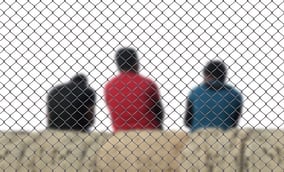
Refugees create unique issues for human services organizations, especially when it comes to creating and maintaining an accurate database to manage the care they need. One of the main things you find with onboarding the refugees into your database is the difficult nature of getting accurate data. It is hard to track that information and store that information and then to get your database to talk to other databases that data.
No Birthdays For Refugees
 One issue that makes creating an accurate database is that there are several countries we deal with that don’t have databases for tracking birthdays. So many of them don’t know what their birthday is. Maybe they know what year they were born, but that’s about it.
One issue that makes creating an accurate database is that there are several countries we deal with that don’t have databases for tracking birthdays. So many of them don’t know what their birthday is. Maybe they know what year they were born, but that’s about it.
So, when creating a good human services software for these organizations, one of the first things many ask for is to remove the birthday from the data set. That’s literally the first request we get from several databases, because they can’t get it.
A Picture’s Worth a 1000 Bytes
 Also, we help them find new ways to accurately keep track of who’s who, when information might not be plentiful. For example, in a database you can check scars, tattoos and other identifying marks by taking pictures and uploading them into the database. You can use the pictures to track that information and feel better about its accuracy. If you have an identifying picture associated with a refugee in your database, that’s going to increase the reliability and validity of what you have.
Also, we help them find new ways to accurately keep track of who’s who, when information might not be plentiful. For example, in a database you can check scars, tattoos and other identifying marks by taking pictures and uploading them into the database. You can use the pictures to track that information and feel better about its accuracy. If you have an identifying picture associated with a refugee in your database, that’s going to increase the reliability and validity of what you have.
So, with organizations helping refugees, creating the right human services software is all about helping you get as much data as you can, keeping it in a centralized location and making sure you have the ability to share and track that information. Then you can tell where they’re going, what the outcome is, if they come back to the community.
Prepare Today for Tomorrow
 I think what we’re going to see in the next few years with the relocation of refugees, is they will start coming back. The community you land in when you get here, that becomes your new home town. It’s where you’re comfortable. They get deported or transferred, once they are free to move about again, many will go back to that new hometown they were comfortable in.
I think what we’re going to see in the next few years with the relocation of refugees, is they will start coming back. The community you land in when you get here, that becomes your new home town. It’s where you’re comfortable. They get deported or transferred, once they are free to move about again, many will go back to that new hometown they were comfortable in.
Having the right human services software to build a good database will be important. I think that the databases we build today will really come into play in four or five years, when we see the long-term effects of refugee and immigration issues we’re tackling today.

